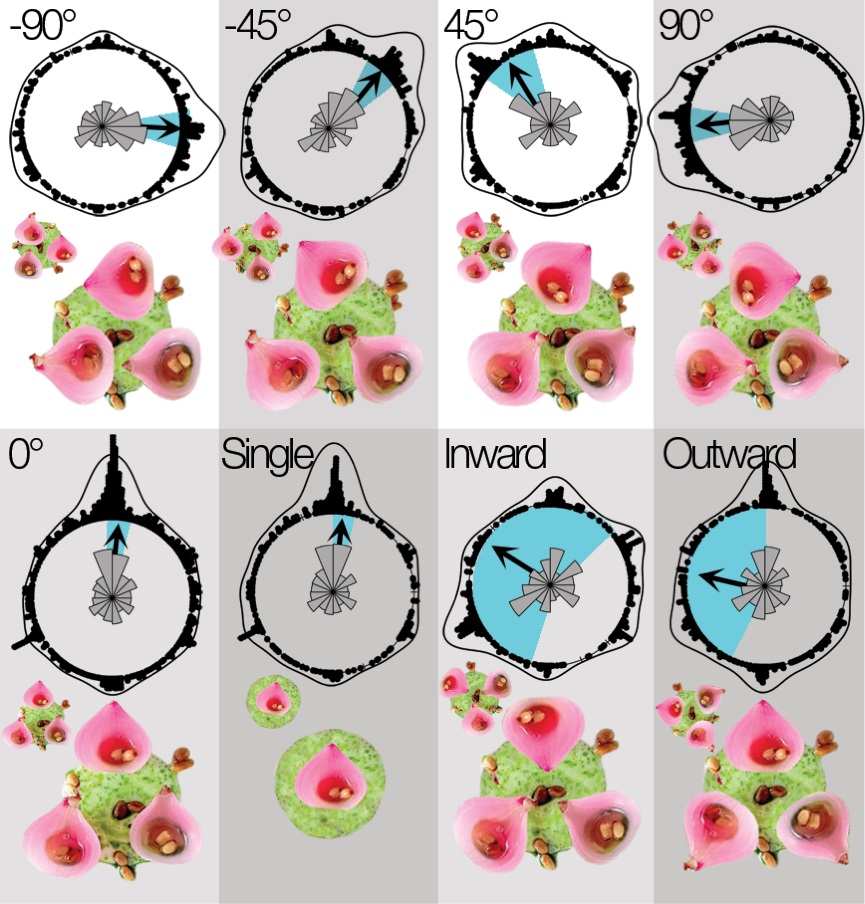Have you ever found yourself rotating your plate once the waiter has placed it down before you at the restaurant? It is something I usually do rather unconsciously, as an automatic response to seeing food – as if the waiter had not placed it exactly as the chef wanted it to be.

This everyday action that some of us do might hint at the fact that we all enjoy our food more when it is ‘oriented’ in the best way possible.
Indeed, by arranging the food to ‘look better’, we might be unconsciously enhancing its perceived value, and hence our enjoyment of it.
But what exactly makes a given arrangement of the food on the plate feel more pleasing to look at, photograph, and possibly even eat?
A year ago, we stumbled upon this picture of one of the signature dishes of Alberto Landgraf, a Brasilian chef recently awarded one Michelin-star at his restaurant Epice, in Sao Paulo.
It caught our eye because its main ‘visual feel’ seemed to point away from the diner. Note how the individual v-shaped elements of the dish (pickled onions) had all been arranged so as to point upward, but also that the Gestalt (‘whole’) forms a triangle whose orientation points upwards.
With Andy Woods and Professor Spence, we created a new online test to assess the impact of different visual orientations of this image of food on people’s expectations.
Two hundred people took part in the first experiment, and the results suggested that if the food has an explicit point or angle, then people prefer the dish if the individual elements are oriented pointing ‘up’, or ‘away’.
The data also shows that people attribute a higher value, and are willing to pay significantly more, for the optimally oriented dish (the data was analysed using circular statistics, with the kind help of Professor Makus Neuhäuser).

We then replicated this experiment in collaboration with the Science Museum, as part of a live science experiment in the Cravings exhibition (you can take part here). The image below shows the visual representation of the data gathered from the experiment between 20 February and April 2015.

The ideal angle to orient this particular plate of food is indicated by the arrow (3.20° clockwise), with the dots representing the orientation chosen by each of the 1667 participants.
We are already very excited about the insights we’re gaining from the experiment, in what is probably one of the largest experiments regarding the psychology of food ever conducted. As I write, 12,171 participants have taken part so far and that number is growing everyday.
In the first published article using data from the Science Museum experiment, our research suggests that visual shapes presented during a dining experience, and their orientation, could have an important role in modelling certain implicit psychological associations about the food, how we feel, perhaps even modelling the social interactions around the table.
In the end, every single food component on the plate, but also the non-edible elements on the table, could be affecting the pleasure elicited by food.
Certainly, anyone wanting to optimise the pleasure of food that they serve and eat might want to look further than just the design of the food, and think about how it is consumed and visually presented.
I believe much can be gained from developing a better understanding of the pleasure of food and exploring how aesthetically pleasing food compositions on a plate can really enhance our everyday food experiences.
Charles Michel is a chef and researcher on food aesthetics at Oxford University’s Crossmodal Research Laboratory.
This research was published in May 2015 in one of the premier food science journals, Food Quality and Preference, and can be read for free here.
This blog was written to support the exhibition Cravings: Can Your Food Control You? at the Science Museum back in 2015.
Cravings: Can Your Food Control You? is generously supported by GSK (Major Sponsor) and Danone (Associate Sponsor), with additional support from the Economic and Social Research Council and the Medical Research Council.